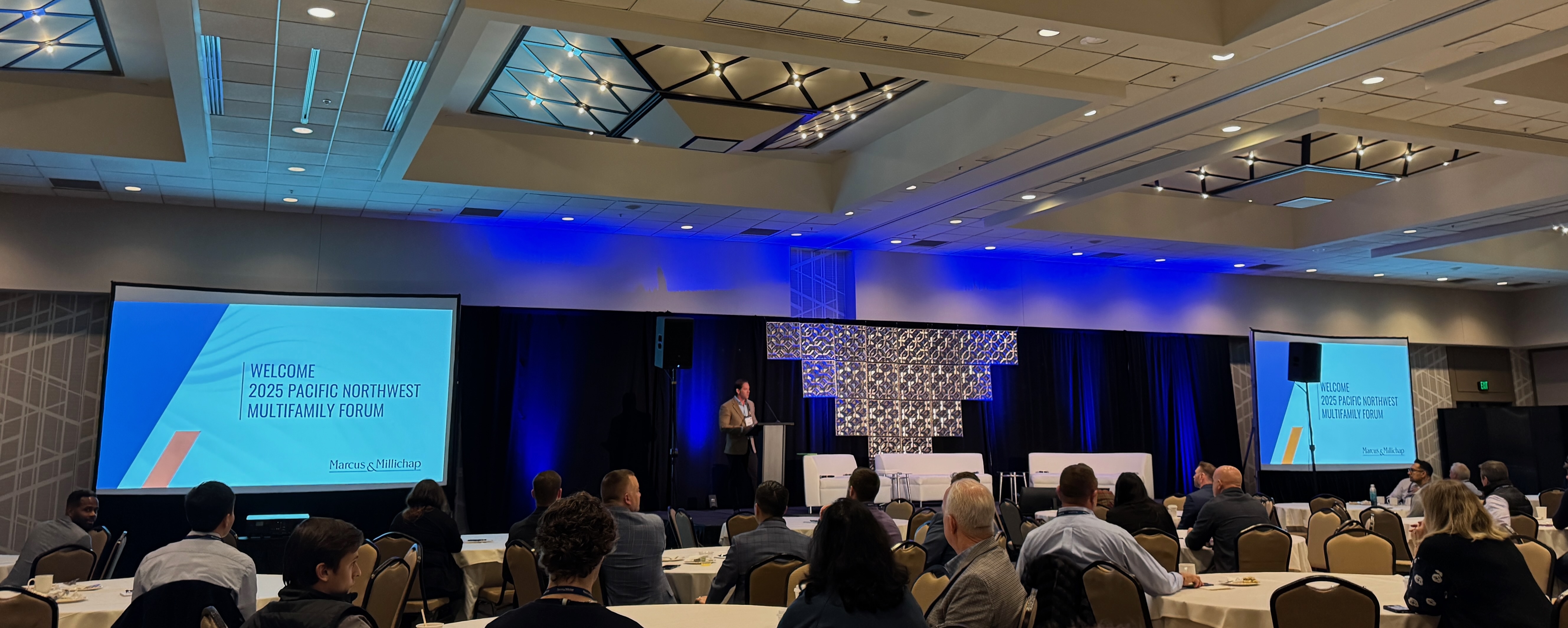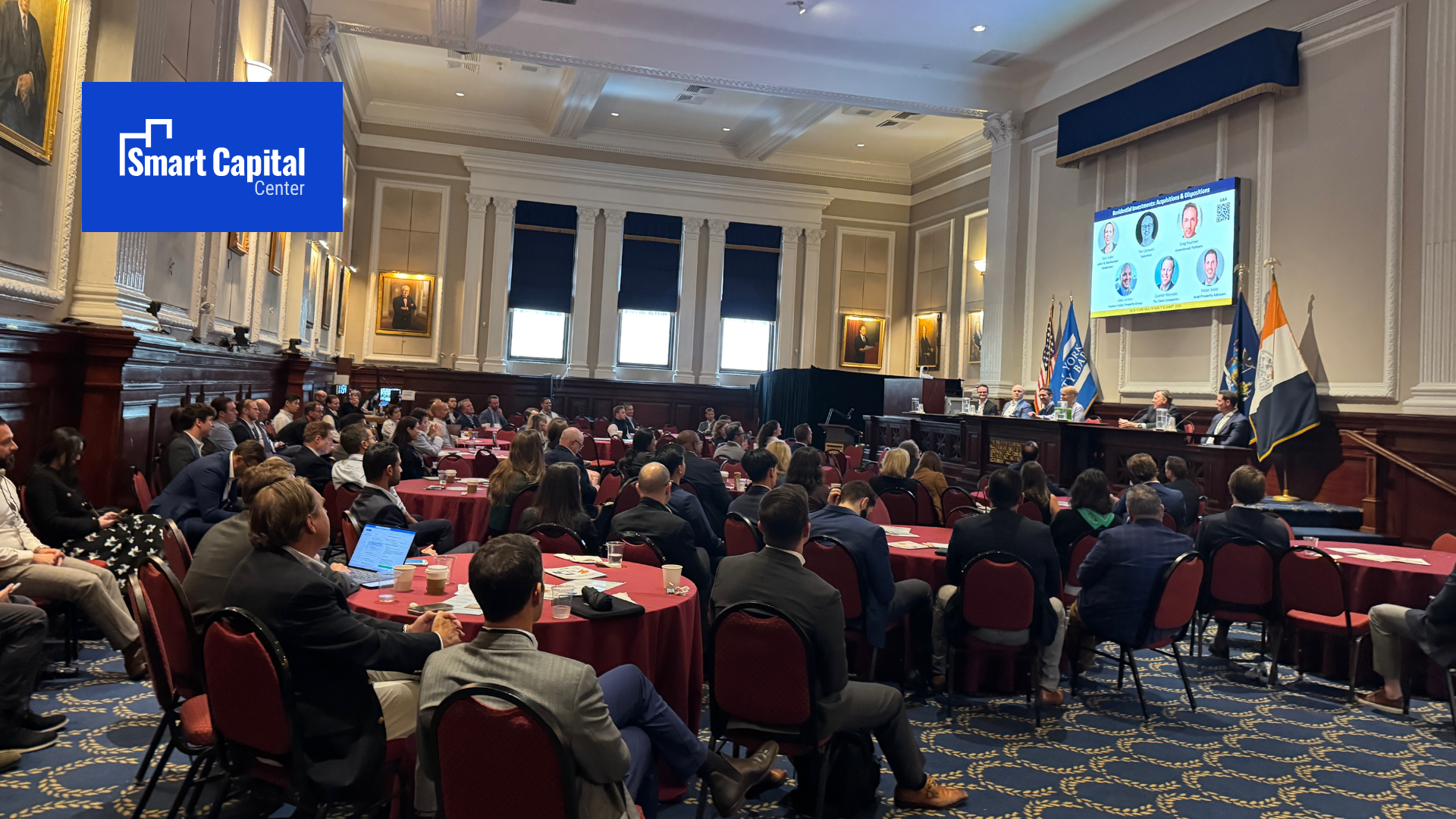November 13, 2025

“It's like navigating the fog. If you drive too quickly, you drive off the road. If you go too slowly, you get it from behind―so you slow down.” This memorable metaphor set the stage at the Urban Land Institute's (ULI) 2026 Emerging Trends panel, capturing a collective mood that is cautious, restless, and ever-watchful for signals of change. As one panelist observed, “There’s a lot of thought right now, and hopefully at the end of this panel, people will feel like these helped you with your brights, put your brights on... to navigate.”
The New Real Estate Reality: Technology, Demographics, and Resilient Strategy
This year’s ULI/PwC Emerging Trends report delivers a clear message: “Our industry is neither standing still nor returning to old norms. It is reshaping itself for a new era as technology integrates across the built environment, and demographic shifts create new demand patterns.” The combination of economic headwinds and shifting capital markets means leaders are searching for both conviction and clarity.
Decision-makers increasingly rely on precise data and advanced analytics to rise above market noise. As Chris Porter of John Burns Research & Consulting put it, “The challenge always used to be, there was never enough good data, and now the problem is, there's so much data. How do you make sense of what's actually good and what's worth paying attention to?” The industry response is clear: quality data curation, agile thinking, and the courage to act in ambiguity.
AI Moves into Real Estate: Insight over Intuition
Artificial Intelligence is no longer just a tech buzzword; it’s rapidly shaping the core of commercial real estate strategy. The ULI report emphasizes that “AI moves into real estate” is now a pivotal trend. “Our analysts are doing a lot more,” noted Sarah Queen, a ULI board member. “They’re spending a lot of time asking questions to the AI... what you get is an increase in productivity and much higher quality work.”
Both on stage and in the field, practitioners are experimenting and iterating. Hassam Naji of Marcus & Millichap candidly remarked, “Everyone is trying to figure out how to improve their operations, whether it’s leasing, yield management, or pricing—everyone’s struggling with it.” The panelists agreed that AI is not eliminating expertise, but rather, amplifying it—streamlining underwriting, elevating scenario modeling, and sharpening the focus on operational risk.
For example, risk teams are now running business plans and market comparables through AI to surface inconsistencies and opportunities: “You’re ending up with a higher quality product, and that is really exciting.” Platforms like Smart Capital Center (SCC) are part of this wider movement, merging automated data extraction and analytics with hands-on CRE acumen, offering timely insights across a range of workflows. But as the conversation made clear, the focus industry-wide is on actionable information—tools that clarify complexity, not salesmanship.
Capital Markets in the Fog: Speed, Certainty, and Courage
This year’s ULI sentiment survey signaled “a third, a third, a third”—roughly equal optimism, caution, and concern. “The opportunity part of the equation should outweigh the fog,” Naji emphasized, describing an environment where institutions with conviction and preparation are gaining ground. “We’re seeing an eight to 10 price increase during the bidding process now, from start to best and final... whatever you’re waiting for is going to be costly.”
Rapid reaction and clarity of assumptions are now strategic necessities. “With economic uncertainty and higher financing costs creating a palpable 'fog' over the path forward, the most successful players will be those who combine insight with agility,” the ULI report states. As quotes from the transcript highlighted, experimentation and disciplined underwriting—powered by both people and technology—are separating the true risk managers from the idealists.
Workflow automation and analytics platforms, from market leaders to emerging disruptors like SCC, play a role in this transformation. But as the ULI discussion revealed, the winning ingredient remains a blend of rigorous analysis, local insight, and speed: “Those with the best data infrastructure win.”
Essential Sectors: From Niche to Necessity
One of the report’s biggest themes is the evolution of “niche” sectors into pillars of most CRE portfolios. As ULI asserts: “Property types like data centers, senior housing, and self-storage are no longer alternative investments but core components of a diversified, resilient portfolio.”
Data Centers:
“Demand for data centers continues to surge, driven by rapid growth in artificial intelligence and cloud computing, even as power shortages and supply bottlenecks limit expansion.” Vacancy rates are at historic lows. Sarah Queen described the tension: “The hard part is... you’re taking a lot of concentration risk. We’ve been focused more on development deals and some value-add plays.” Forward-thinking investors use advanced scenario modeling, analytics on energy infrastructure, and granular price discovery to succeed.
“Your next roundup might be sponsored by ChatGPT,” joked one panelist, underlining just how tightly interwoven digital infrastructure and real estate have become.
Self-Storage:
This previously overlooked sector is “transitioning from utility to lifestyle and investment hybrid,” says ULI. The fusion of housing constraints, “lifestyle trends favoring flexibility,” and the creation of new asset subtypes like “storage condos” make it an area ripe for innovative investment strategies. Disruption here depends on recognizing micro-market signals and demographic nuance.
Senior Housing:
Porter explained the magnitude: “It feels like exponentially growing 65-plus population in the US... it’s actually 11,000 people turning 65 every day—10% higher than we thought.” With demand exploding, developers are creating everything from tech-enabled living to wellness-focused care communities. Smart segmentation and locational strategy—rooted in top-down demographic and behavioral analysis—drive performance in this sector.
Student Housing:
“There’s nuance and complexity here,” reported ULI, pointing to recent rebounds but future headwinds: “Strong gains in years, but demographic headwinds, ongoing visa delays, and rising construction costs create uncertainty.” Leading operators are going deep: blending enrollment forecasts, international flows, and costs to make precise hold/sell decisions.
Where the Action Is: Top Markets, Demographic Shifts, and Pulse Points
“Don’t ever count New York out,” Queen declared. “The streets are busy. People are in the office. Maybe not five days a week, but certainly four days.” The ULI Top 10 Markets to Watch signal a changing tide—with Dallas-Fort Worth leading, but the Northeast roaring back with Jersey City, Brooklyn, Manhattan, and Northern New Jersey.
Miami’s strong showing reflects both Sun Belt momentum and shifting capital flows. “We suffered from just unbelievable damage post-pandemic,” Naji noted, “but the outmigration seems to be over, which is really important for a lot of these urban markets.”
Immigration policy is increasingly pivotal. “By 2040,” Porter said, “immigration becomes the sole driving force behind population growth in the US.” This directly affects labor supply, household formation, and demand patterns in both traditional and emerging metros.
The return-to-office dynamic is shifting fundamentals. “Office attendance is now about 80% of pre-pandemic 2019 levels,” another executive noted, driving renewed demand for mixed-use and experiential assets in urban cores.
Back to Basics—Reimagined
Operational excellence has moved to the front row. “Softness in multifamily rents, rising expenses, compressed NOI... the operational vulnerability is where technology delivers its most significant ROI,” observed the ULI panel. The dialogue emphasized the imperative to automate financial covenant tracking, quickly analyze rent roll dynamics, and use leasing velocity data to forecast occupancy.
Leaders are using integrated solutions to break down silos between property management, capital markets, and operations—creating ecosystems where data flows seamlessly and decision-makers respond before problems escalate. “By analyzing every data point—from leasing speed to expense spikes—we can retain tenants and drive above-market returns.” For many, this means deploying open APIs and “partnership-agnostic” tools that fit unique operating models.
Conclusions: Seeing Through the Fog, Together
The call to action for real estate professionals is unambiguous. As the panel closed, one advisor warned, “Whatever you’re waiting for is going to be costly.” This is a year for precise, deliberate action—backed by credible data, thoughtful analysis, and the flexibility to adapt as conditions shift.
Technologies that leverage data, automate routine tasks, and clarify multi-factor investment decisions are valuable allies in this journey—SCC among them, but by no means the only option in an expanding landscape. The true differentiator, as echoed throughout ULI’s conversations and report, remains human: the willingness to scrutinize, experiment, and move with confidence.





